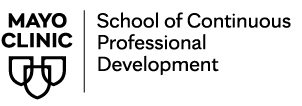Practice-Changing Literature Updates for the Outpatient Clinician
Majken T. Wingo, M.D.
LEARNING OBJECTIVES
Upon conclusion of this activity, participants should be able to:
- Describe the cardiovascular benefits of lower blood pressure in older patients
- Identify evidence-based, cost-effective treatments for rotator cuff disorders
- Delineate evidence-based treatment options for heart failure with preserved ejection fraction
- Describe indications for antibiotics in diverticulitis treatment
- Report appropriate follow up interval for patients with a history of 1-2 subcentimeter adenomatous colon polyps
- Identify the best LDL target for patients with who have had a TIA or stroke
- Delineate the appropriate age range to screen for hepatitis C
- Describe indications for surgical referral in patients with symptoms of sciatica
- Identify latent TB regimens with best efficacy, tolerability, and completion rates
- Describe the most effective treatment regiment for DJD-related knee pain
ATTENDANCE / CREDIT
Text the session code (provided only at the session) to 507-200-3010 within 48 hours of the live presentation to record attendance. All learners are encouraged to text attendance regardless of credit needs. This number is only used for receiving text messages related to tracking attendance. Additional tasks to obtain credit may be required based on the specific activity requirements and will be announced accordingly. Swiping your badge will not provide credit; that process is only applicable to meet GME requirements for Residents & Fellows.
TRANSCRIPT
Any credit or attendance awarded from this session will appear on your Transcript.
For disclosure information regarding Mayo Clinic School of Continuous Professional Development accreditation review committee member(s) and staff, please go here to review disclosures.

 Facebook
Facebook X
X LinkedIn
LinkedIn Forward
Forward